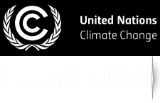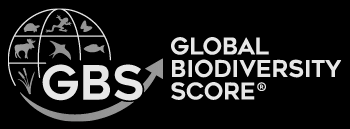Before jumping into the core part of our subject, one may want to ask: Why do we immediately speak about sustainable brand marketing (branding) ? Why not speak about sustainable product marketing (advertising) ?
Well, brand marketing and product marketing stem from different business goals. Brand marketing is best for long-term equity-building which can solidify competitive differentiation and consumer loyalty. Product marketing is best for short-term sales and conversion goals.
Let’s take an eloquent example and let’s imagine Kim Kardashian, the queen of branding herself. Kim is tirelessly brand marketing; from the clothes Kim wears to the people she surrounds herself with, Kim is solidifying her reputation with every decision. Now, imagine Kim was preparing to release a new line of lipsticks and wanted to drive sales. In this case, Kim needs to engage in product marketing. But just ask yourself, if Kim’s brand wasn’t as strong as it is, would anyone care about her new lipstick?
The same logic applies to sustainable branding and advertising.
If all companies do sustainable advertising, promoting sustainable products, any business could claim to be sustainable. But how can a product genuinely be sustainable if the brand doesn’t engage into a sustainable strategic plan first ?
Whether it is Kim Kardashian or a sustainable brand, both are building a desired perception, something they want to be “known for” because this will help them in the long-term.
To build their sustainable brand equity, companies should first, before anything else, achieve distance from what they do, and ask themselves if their approach is aligned with the following pillars of sustainability:
A brand that is honest
Take a step back and ask yourself. Are you comfortable with what you do ? With the service you provide and the product you sell ? In 2022 trust comes under fire with regard to the information being shared and the marketing tactics employed by brands. The focus is on transparency and an eco-ethical mission rather than fear marketing.
A brand that takes action
Sceptical about brands’ claims, consumers need proof. Don’t set yourself objectives you are not sure you can achieve, or worst, that you are not sure you want to achieve. In the matter of sustainability, less is more: With Transparency and humility being key values of our century, it is today better seen to do less, but to do it well. The more you want to do, the less likely you will actually do it, and even if your intentions are good, you risk to be seen as incompetent and untrustworthy. So, have a look at your true abilities, and prioritise what your next achievement should be.
A brand that is relevant
With consumers being key in this whole process, companies obviously have to be consumer-relevant and people-centric. What are their attitudes towards sustainability, towards the market you operate in ? What are their fears and doubts and how can you help ? This doesn’t simply apply for products but all type of content you can transmit: the information you can share, the help you can provide to answer their questions and live the sustainable lifestyle they want to live.
To be relevant you should also make sure you are relevant in regards to all the progress that institutions and governments make, the deals that are signed that companies should align with, as well as the research that is being done and that will inform you on the limits of our current models. All this knowledge will help you make a difference in a world in constant progress, and with urgent needs.
A brand that is simple
This one is not new, quite the opposite. The Simplicity Index has existed for a long time and nevertheless is more relevant today than ever. The truth is: in this era of transition, simplicity pays. In the Ninth Edition of the World’s Simplest Brand Report, it is stated that 70% of consumers are more likely to recommend a brand because it provides simpler experiences and communications.
In a nutshell: think simple, convey simple. The more easily your value proposition is understood by consumers, the easiest it will be for them to trust it. And the most likely they will turn to you to access information.
A brand that is consistent
Consistency is the key to simplicity: if you are not consistent throughout everything you do, you will not be able to strike as a simple company. Consistency when it comes to sustainability applies to two points:
First, consistency means following the same red thread and make sure you base all your decisions on your essence. This will ensure to have the same message delivered throughout everything you do.
Second, consistency means respect. It circles back to the first point about honesty. Do you do everything you say ? Are you truthful in everything you state about yourself ?
If they adopt those 5 pillars in their approach, companies will have the right mindset and the right foundation to start building their sustainable brand equity.
Once we have those key components in mind, how do you actually build your brand sustainable proposition ? Encapsulated in four simple steps, found in our WDNR brand framework we call Creed-to-Act this sustainable DNA will act as the foundation for who you are and what you do.
1/ Your vision
Because your approach and your plan should first be honest, it means you probably have — or at least you should have — a vision. What does the world look like, in your eco-imaginary ? If your brand was a whole new planet, a planet that will have benefited from your impact, how would it look ?
2/ Your mission
Once you have the vision, you need to set your company — you and your teams — a mission: something you aim to fulfil to make that vision come true. What do you work on achieving, everyday, to build it ?
Let’s take a real-life example, that’s always more helpful. Are you familiar with the brand Toms ? 🙂
Toms has been known for a long time as one of the top in class examples for corporate responsibility because they, very early on, displayed a clear mission towards building a sustainable business.
We could phrase their vision as such: “We imagine a world where the new standard for companies’ business models no longer relies on rentability.”
In order to make this world become real, they gave themselves one mission: To use their company to improve people’s lives.
In that example, Tom’s will measure their success based on lives they save, and no longer on the margin they make.
3/ Your engagement pillars
Once you have a clear mission to aim at collectively, you then need to have strong engagement pillars. Those are actions a company commits to respect everyday, concrete things it achieves to fulfil their mission, in the long run. This is the moment when your actions need to meet your words, and where your consistency and your honesty will be tested.
For instance, Toms has engaged in developing “Earthwise”, a range of products that fits ecological criteria and that they commit to deploy at a larger scale every year.
4/ Your guiding principles
Last but not least, remember “change starts from within”. In other words, how can we expect companies to be consistent and truthful if the standards they claim to have for the world are not first respected internally ?
That’s right, companies should make sure the engagement they take are aligned with strong values they live by. Rather than values, we should perhaps talk about guiding principles, a unique way of doing things that guides you in everything you do, and that makes you you. In the sector of sustainability, a lot of companies start preaching goods. So what makes a company unique ? and how does it impact their personality, their work environment, and consequently their hiring process ?
Once companies have a strong vision and mission, aligned with simple but transparent engagement pillars and guiding principles, they have a strong foundation to develop their sustainable brand. It will guide them through all the actions and activities they develop, and will ensure it respects the five key rules of sustainability: honesty, action, relevance, simplicity, and consistency. We call it becoming a Future-Proof Brand.
Article by Andrea Reveyrand, senior brand strategist at We don’t need roads.








